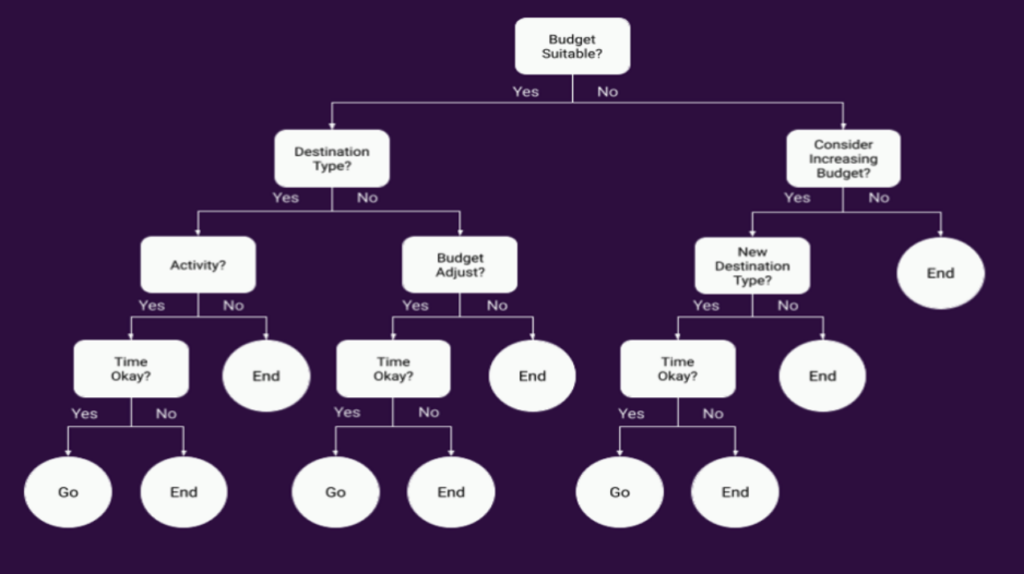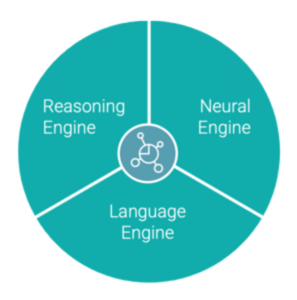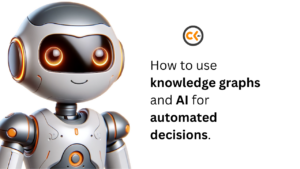In this article, we tackle problems relating to car insurance and show how AI Decision Intelligence can be used for making decisions about whether car insurance claims should be refused or accepted.
Organisational decision-making is complex.
AI Decision Intelligence (DI) is a discipline designed to help organisations enhance their decision-making capabilities by combining human-like reasoning with the efficiency of automation. It helps organisations to make faster, better decisions, reduce risks, increase efficiency and capitalise on opportunities more effectively.
DI allows you to codify human expertise and knowledge into a “Knowledge Graph” model to replicate human reasoning and produce transparent and explainable decisions, ensuring high-quality and consistent outcomes. Decisions that once relied on humans with significant training and experience, where you need to make inferences in the absence of precise data, can now be automated.
So , what’s new here? Haven’t we been using Decision Trees for years?
While Decision Trees are useful to automate straightforward, “if this then that” rule-based, hierarchical decisions, Knowledge Graphs are a powerful new approach, rapidly gaining in popularity as the world embraces AI.
Knowledge Graphs are well-suited for contexts where decisions depend on a wide range of factors and their interplay. They offer a more robust and flexible approach for handling complex, interconnected data, and incorporate context more deeply into the decision-making process, providing more nuanced and informed decisions.
This makes Knowledge Graphs more suitable for advanced decision intelligence applications.
Decision tree

How knowledge graphs work.
Imagine a giant map that shows not just places, but also how everything that you might want to consider when making a decision is connected.
This map is called a “Knowledge Graph.” There are three main components to consider when constructing a Knowledge Graph. In this example, it is to be used for making decisions about whether car insurance claims should be refused or accepted.
Nodes (Lozenges on the Map): Each lozenge represents something, like a person, an event, an object or a concept. For example, one lozenge could be “car accident,” another could be “John Smith,” and another could be “insurance policy.”
Edges (Lines Connecting the Lozenges): The lines show how the lozenges (concepts) are related. So, a line might connect “car accident” to “John Smith” with the label “involved in,” and another line might connect “John Smith” to “insurance policy” with the label “has.”
Properties (Extra Information): Each lozenge and line can have extra details. For example, the “car accident” dot might have properties like “date: May 10, 2024,” “location: Main Street,” and “damage: front bumper.”
Knowledge Graph

In decision intelligence, people use this knowledge map to replicate human decision making.
Using a knowledge graph to capture the concepts, relationships and nuances that your subject matter experts would consider when deciding if a car insurance claim is valid makes it possible to automate complex decision making.
Modelling is dynamic — you just “map” what is important and combine all the logic factors that are considered when you query the model. It supports weights and probabilities and can evaluate all relevant factors and produce a decision even if certain data is missing.
It works like this:
Seeing Connections: By looking at how everything is connected, you can understand the situation better. For example, you can check if the “car accident” is connected to “John Smith” and if John has a valid “insurance policy.”
Finding Patterns: They can spot patterns and trends. For instance, you might see that most valid claims have certain details, like a police report attached. If John’s claim has these details, it’s a good sign.
Making Predictions: By looking at past claims, you can guess if John’s claim will be valid. If every time there is damage like “front bumper” with a police report, the claim is usually approved, you can predict that John’s claim might be approved too.
Solving Problems: If you have a problem to solve, like figuring out why a claim might be suspicious, you can use the map to see if there’s a connection you might have missed. Maybe John’s claim is missing important details, or maybe there are past claims connected to John that look suspicious.
A knowledge graph in decision intelligence helps you to understand a wide range of information about the car accident, see how it all fits together, and make smart decisions about whether the insurance claim is valid. It’s like having a super detailed map that shows you the best path to take.
Trustworthy Decision Automation
Once you have used a Knowledge Graph to map out the considerations your experts might use when deciding, you can then use “Inference algorithms” to “reason” over these models and their data connections to derive high-quality answers to complex questions.


At Customer Science, we work with Rainbird’s Knowledge-Graph based decision intelligence platform to solve a wide range of complex business problems.
It’s no surprise then that the heart of Rainbird is the Knowledge Graph (see the diagram below). It is a visual representation of the decision-making process and is built by sitting down with your subject matter experts and capturing their knowledge as it relates to a process — the business rules, calculations, constraints and nuances that your expert team consider when planning.
Interacting with the Knowledge Graph is Rainbird’s Reasoning Engine. Once you connect the knowledge graph (or model), to data, the Reasoning Engine runs the data through the knowledge graph and provides a decision that can be queried, explained and audited.
The Neural Engine is an optional component which uses ML techniques that are designed to refine the Rainbird Knowledge Graph using historic and real-time data. The neural engine analyses the information to identify:
- New concepts and relationships
- New rules and adjustments to existing rules
- Adjustments to rule weightings & certainties
Rather than automatically changing the factors and weightings that the model uses to identify fraud/make decisions, this “supervised machine learning” approach surfaces new recommendations to your human experts, who can test, validate and accept or reject the recommendations before putting them into production.
Finally, the Language Engine serves two main purposes. Firstly, it uses Generative AI to ingest unstructured data (such as from policy & legal documents) from which it can create a draft knowledge graph, ready to be refined by your subject matter experts. This is useful to accelerate the creation of new decision models. Secondly, it provides a plain English way of interacting with the reasoning Engine. You can ask questions and it can provide reasoning for its decisions in plain English. Most importantly, Rainbird’s knowledge models are transparent rather than a black box like ChatGPT – so decisions are reliable, explainable and can be scrutinised for bias.
The key benefit of Rainbird over other AI-based solutions such as GPT and LLMs – even when using “Retrieval Augmented Generation” (RAG) – is that the model’s reasoning is clear – and auditable – so its decisions can be trusted.
You can easily step through the reasoning behind decision making right back to the source data, understand and maintain the logic, and sleep safe in the knowledge that all decision outcomes are auditable — and can be trusted.
Different downstream automations can be triggered based on the decision outcomes. Typically, a “human in the loop” process is implemented, where your team are notified of a Rainbird decision. Staff can then review the reasons for the decision before making a determination, greatly accelerating decision making speed and consistency.
In summary:
Rainbird models are designed by your experts and can be made from existing process documentation, but unlike rules engines, support any level of decision complexity.
Rainbird support weights and certainties to better represent the nuance of real-world decisions—set by experts or derived from data.
Rules in Rainbird are independent of each other creating not a decision tree but a decision space over which Rainbird can reason to perform a meticulous analysis of all the relevant connected factors leading to better outcomes.
If data is missing, Rainbird makes inferences or ask a human for help—delivering seamless efficiency and outcomes that are nuanced and accurate.
Get in touch with us below if you’ve got repetitive processes that involve complex decision making that you’d like to automate! We would be happy to give you a demonstration and discuss how it could be best applied to challenges in your organisation.
